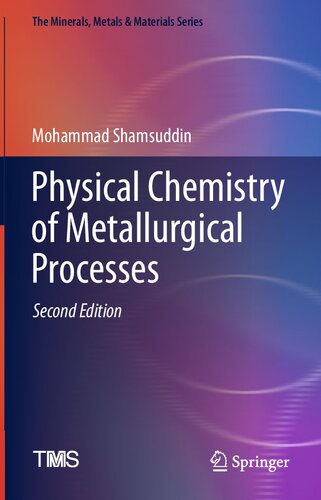

Most ebook files are in PDF format, so you can easily read them using various software such as Foxit Reader or directly on the Google Chrome browser.
Some ebook files are released by publishers in other formats such as .awz, .mobi, .epub, .fb2, etc. You may need to install specific software to read these formats on mobile/PC, such as Calibre.
Please read the tutorial at this link. https://ebooknice.com/page/post?id=faq
We offer FREE conversion to the popular formats you request; however, this may take some time. Therefore, right after payment, please email us, and we will try to provide the service as quickly as possible.
For some exceptional file formats or broken links (if any), please refrain from opening any disputes. Instead, email us first, and we will try to assist within a maximum of 6 hours.
EbookNice Team

Status:
Available4.4
27 reviewsThis updated, second edition retains its classroom-tested treatment of physical chemistry of metallurgical topics, such as roasting of sulfide minerals, matte smelting, converting, structure, properties and theories of slag, reduction of oxides and reduction smelting, interfacial phenomena, steelmaking, secondary steelmaking, role of halides in extraction of metals, refining, hydrometallurgy and electrometallurgy, and adds new data in worked-out examples as well as up-to-date references to the literature. The book further explains the physical chemistry of various metallurgical topics, steps involved in extraction of metals, such as roasting, matte smelting/converting, reduction smelting, steelmaking reactions, deoxidation, stainless steelmaking, vacuum degassing, refining, leaching, chemical precipitation, ion exchange, solvent extraction, cementation, gaseous reduction and electrowinning. Each topic is illustrated with appropriate examples of applications of the technique in extraction of some common, reactive, rare, or refractory metal together with worked out problems explaining the principle of the operation. The problems require imagination and critical analyses and also encourage readers for creative application of thermodynamic data in metal extraction.